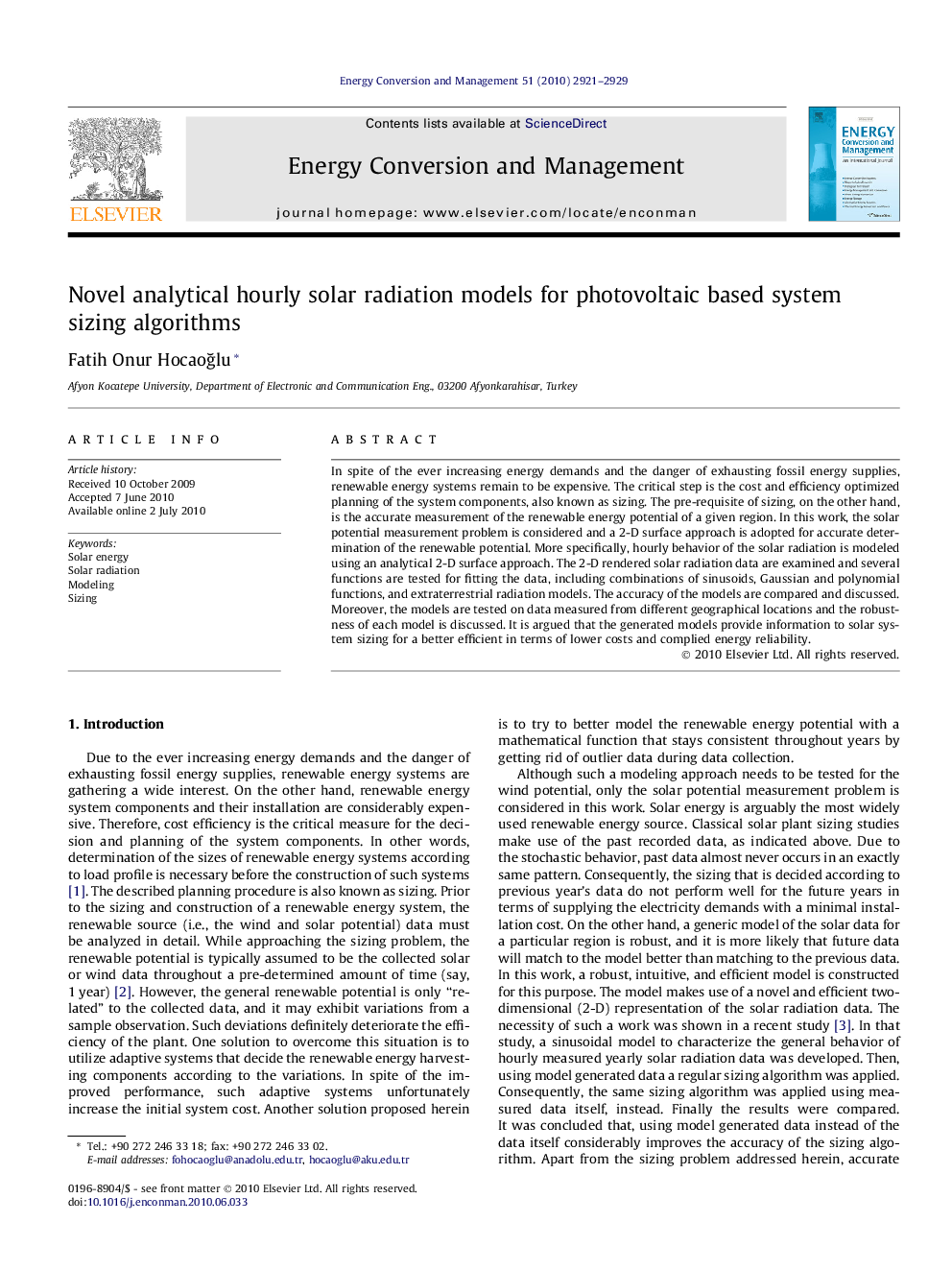| Article ID | Journal | Published Year | Pages | File Type |
|---|---|---|---|---|
| 764684 | Energy Conversion and Management | 2010 | 9 Pages |
In spite of the ever increasing energy demands and the danger of exhausting fossil energy supplies, renewable energy systems remain to be expensive. The critical step is the cost and efficiency optimized planning of the system components, also known as sizing. The pre-requisite of sizing, on the other hand, is the accurate measurement of the renewable energy potential of a given region. In this work, the solar potential measurement problem is considered and a 2-D surface approach is adopted for accurate determination of the renewable potential. More specifically, hourly behavior of the solar radiation is modeled using an analytical 2-D surface approach. The 2-D rendered solar radiation data are examined and several functions are tested for fitting the data, including combinations of sinusoids, Gaussian and polynomial functions, and extraterrestrial radiation models. The accuracy of the models are compared and discussed. Moreover, the models are tested on data measured from different geographical locations and the robustness of each model is discussed. It is argued that the generated models provide information to solar system sizing for a better efficient in terms of lower costs and complied energy reliability.
